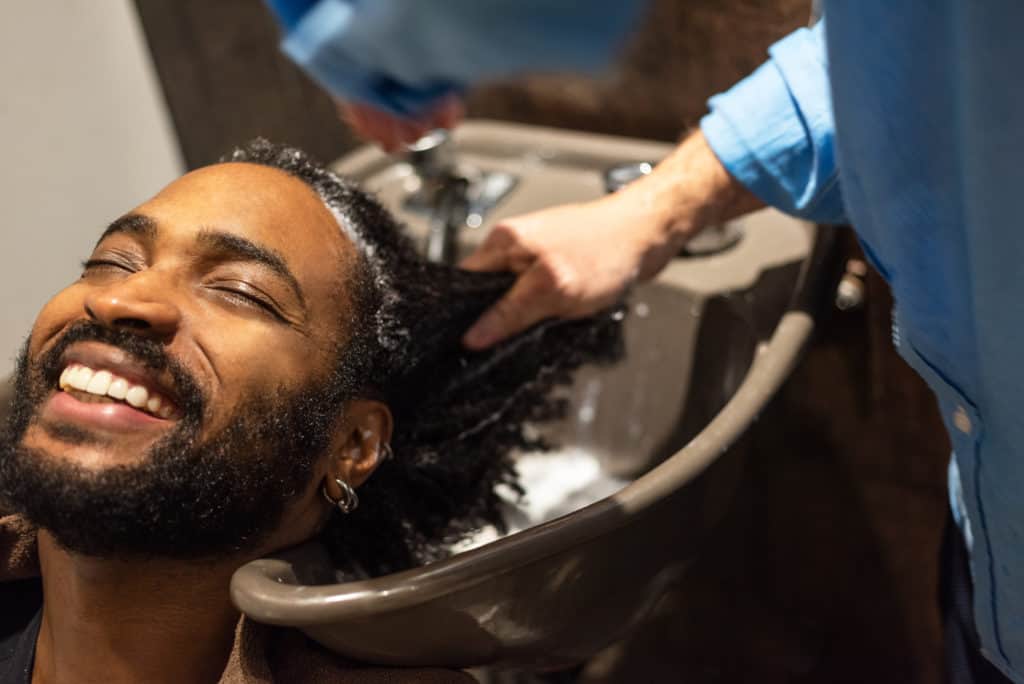Textured hair—whether curly, wavy, or coily—has its own set of unique characteristics that make it both beautiful and, at times, a little more challenging to manage. While it might seem like a lot of work to care for, once you know the right techniques and products, textured hair can be both healthy and easy to maintain. Whether you're embracing your natural hair or looking to improve the texture, here's everything you need to know about caring for male textured hair.
Understanding Male Textured Hair
Textured hair typically refers to hair that has more curl, wave, or kink to it than straight hair. It's important to note that textured hair is not just about appearance—it has different structural properties that affect how it reacts to products, styling, and even the environment. Some key characteristics of textured hair include:
- Curvature: Textured hair tends to have a natural curl or wave pattern. The tighter the curl, the more it may seem to shrink or appear shorter than it actually is.
- Porosity: Textured hair often has varying levels of porosity, which means it can absorb and retain moisture differently.
- Dryness: Due to the structure of the hair shaft, oils and natural moisture have a harder time traveling down the twists and turns of textured hair. This can lead to dryness and breakage if not cared for properly.
Tips for Caring for Male Textured Hair
Caring for textured hair involves a combination of hydration, protection, and the right styling methods. Here's how to give your hair the best care:
1. Hydrate, Hydrate, Hydrate
Textured hair tends to be drier than straight hair due to its natural shape. Proper hydration is key to keeping your hair soft and manageable.
- Shampoo: Look for sulfate-free shampoos that cleanse without stripping your hair of its natural oils. Over-washing can lead to dryness, so consider shampooing just once or twice a week.
- Condition: Use a deep conditioner that’s specifically designed for textured or curly hair. These conditioners usually contain ingredients like shea butter, coconut oil, or argan oil, which help to lock in moisture.
- Leave-in Conditioner: A good leave-in conditioner is a must for textured hair. It helps to detangle, add moisture, and reduce frizz.
2. Embrace the Right Oils
Natural oils are a great way to maintain moisture and shine in textured hair. Oils like argan oil, jojoba oil, and castor oil are popular choices for adding hydration and reducing frizz.
- How to Apply: Apply oil to damp hair after conditioning. This helps to seal in moisture and create a barrier that protects against heat and environmental damage.
- Use Lightly: Remember that a little goes a long way, especially if your hair tends to be on the finer side.
3. Detangle with Care
Textured hair is more prone to tangling than straight hair, so it’s important to use the right detangling techniques.
- Wide-Tooth Comb: After washing, use a wide-tooth comb or your fingers to gently detangle your hair. Start at the tips and work your way up to avoid causing breakage.
- Leave-In Conditioner or Detangler Spray: These products can make the detangling process smoother by providing slip and minimizing hair damage.
4. Avoid Heat Damage
Excessive heat can damage textured hair, leaving it dry and brittle. If you must use heat, make sure to protect your strands.
- Heat Protection: Always use a heat protectant spray or serum before using blow dryers, straighteners, or curlers. These products create a barrier that minimizes the impact of heat.
- Air Dry or Diffuse: If you’re not in a rush, air-drying your hair is the gentlest method. If you prefer a quicker drying time, use a diffuser attachment on your blow dryer to distribute heat more evenly and reduce frizz.
5. Trim Regularly
Just like any other hair type, textured hair needs regular trims to keep it healthy and free from split ends. Aim for a trim every 6–8 weeks, or as needed, depending on how fast your hair grows.
- Shape Your Curls or Waves: If you want to maintain a specific shape or length, a stylist experienced with textured hair can help you shape your curls or waves for the best possible look.
6. Protect While You Sleep
Textured hair is more fragile when it’s dry, and friction while sleeping can lead to breakage. To protect your hair at night:
- Silk or Satin Pillowcase: Unlike cotton pillowcases, silk and satin cause less friction, which helps prevent breakage and frizz.
- Protective Styles: You can also try putting your hair in a loose, protective style before bed, like a loose braid or twists, to reduce tangling and breakage.
7. Choose the Right Products for Your Hair Type
There’s no one-size-fits-all approach to caring for textured hair, so it’s important to select products that suit your specific hair type and needs.
- Curly Hair: Look for curl creams, gels, and mousses that enhance and define your curls without making them crunchy or stiff.
- Coily Hair: Coily hair benefits from heavier creams and butters that provide intense moisture and define tight coils.
- Wavy Hair: Lightweight mousse or styling cream can add texture and volume without weighing your hair down.
Taking care of male textured hair is all about hydration, protection, and embracing the natural shape and style of your hair. By using the right products and techniques, you can keep your hair healthy, soft, and stylish—whether you're rocking an afro, curls, or coily waves. With consistent care, textured hair can be both manageable and versatile, giving you endless styling options.



